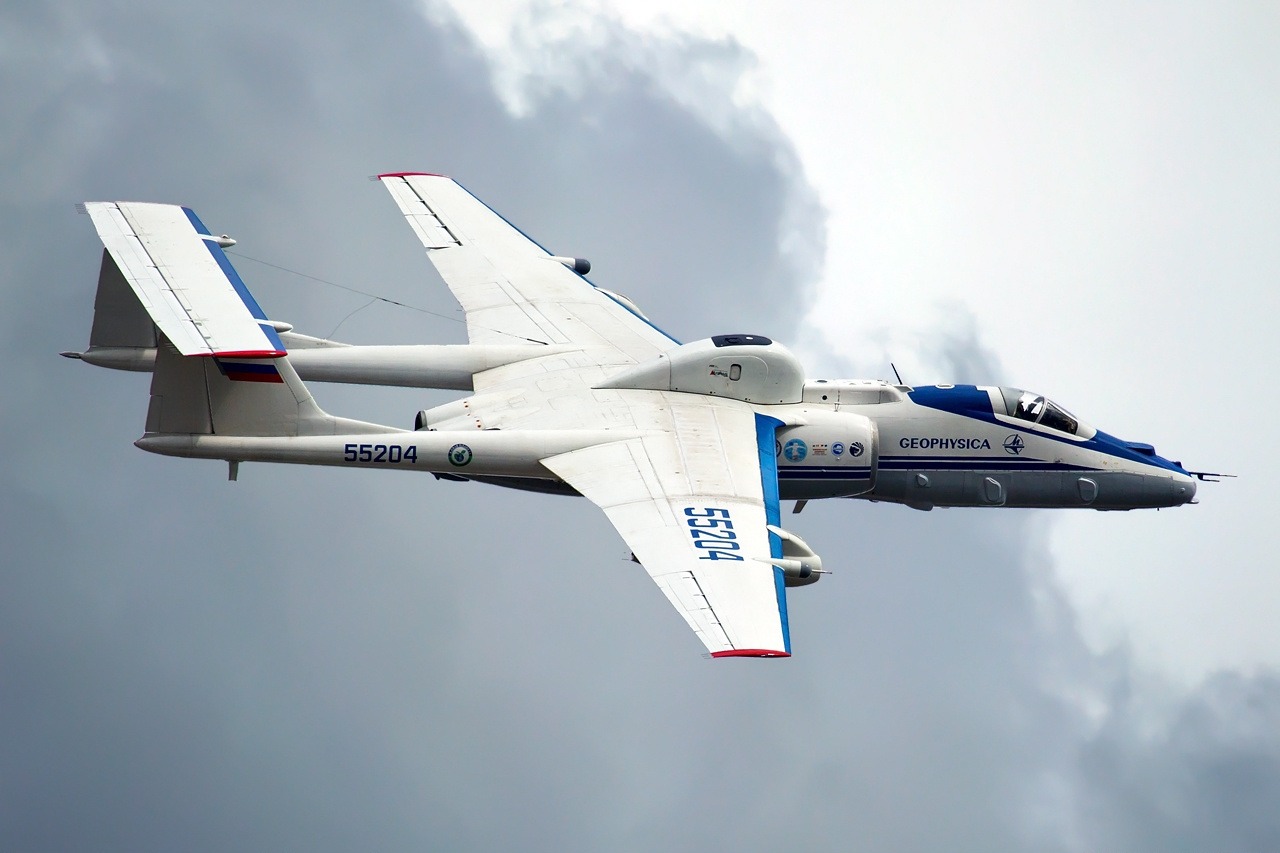Russia has reportedly started the development of a stratospheric strike and reconnaissance system, poised to relay real-time target coordinates to ground-based missile systems and artillery, naval, and aviation assets.
As per sources referenced by the Russian media outlet Izvestia, the system is said to comprise an aircraft and suspended containers equipped with radars, electronic reconnaissance systems, and optoelectronic stations.
The complex centers around an aircraft with the capability to execute missions at elevated altitudes, specifically within the stratosphere — an atmospheric layer situated between 11 to 50 kilometers above the Earth’s surface.
The report said that the aircraft will adopt a modular setup, allowing for the installation of radar, radio-technical, or optoelectronic reconnaissance systems depending on the specific task.
This acquisition will enable real-time target detection across both the battlefield and the operational rear, facilitating the transmission of target designations to various carriers of high-precision weapons, artillery, aviation, and naval vessels.
The equipment of the Stratospheric Reconnaissance and Strike Complex is expected to incorporate suspended reconnaissance containers.
The new reconnaissance complex comprises three containers, each tailored for specific reconnaissance functions. These include the UKR-RT for electronic surveillance, UKR-OE for optoelectronic reconnaissance, and UKR-RL for radar purposes.
The development of UKR-RT commenced in the late 2000s and focuses on detecting and precisely determining the coordinates and technical specifics of various targets, including communication and information transmission systems, radar stations, and unmanned aerial vehicle control lines.
Capable of detecting radar emissions, operational radio communication centers, and even cell phones at distances spanning hundreds of kilometers, the UKR-RT underwent test flights, including installation on the undercarriage of Su-34 frontline bombers.
Vladimir Maksimov, Director General of the Kulon Research Institute, noted that the UKR-RL electronic reconnaissance container, equipped with the fourth-generation Pika-M radar, has completed state tests and real-world trials. This system can operate during any time of day and even under heavy cloud cover.
The UKR-OE containers gather information by receiving and analyzing ultraviolet, visible, and infrared radiation emitted by reconnaissance targets. The equipment within the system is geared to accurately determine coordinates, object types, and other parameters with a high degree of precision.
Cold War-Era M-55 Geophysica High-Altitude Aircraft Testing New System
The Soviet-era M-55 Geophysica high-altitude aircraft is currently validating the use of these containers at high altitudes. Following the outcome of these tests, refinements will be made.
Moreover, the aircraft’s real-time information transmission capability to ground systems is also undergoing rigorous testing.
Recently, images from the aircraft’s trial phase have begun circulating on several social media platforms, suggesting that the testing occurred at the Ramenskoye airfield near Moscow.
Nevertheless, at that time, there was a lack of clarity regarding Russia’s decision to resurrect the high-altitude reconnaissance aircraft M-55 “Geophysica.”
The selection of the M-55 Geophysica as a testing platform for the new RUC (reconnaissance equipment) was deliberate. This aircraft can ascend into the stratosphere, reaching altitudes of up to 21 km.
🇷🇺 Decollato dall'aeroporto di Ramenskoe, vicino a Mosca. dopo decenni di inattività, un raro aereo da ricognizione d’alta quota Myasishchev M-55 “Geophysica” (“Mystic-B” per la NATO).
🧵Oltre 40 fa il “Geophysica” volava all’altitudine massima dell’odierno 🇺🇸RQ-4 Global Hawk pic.twitter.com/MuVL0YiBMJ
— Lukyluke31 (@Lukyluke311) November 7, 2023
The aircraft was initially intended for intercepting high-altitude reconnaissance balloons launched by the United States to photograph Soviet objects. However, in the 1980s, the need for such tasks waned, leading to the reclassification of these aircraft for surveillance and research purposes.
The conflict in Ukraine has shown that reducing the time between identifying a target and its swift elimination is incredibly important.
In a similar line, Test Pilot Igor Malikov explained that conducting reconnaissance from high altitudes holds significant promise. He said that it involves constant monitoring of space to track the enemy’s movements, accumulation of forces, and overall positions.
In the current geopolitical landscape, this knowledge is crucial for enabling rapid responses. The effectiveness of such reconnaissance missions hinges on the quality of the equipment used, particularly radar systems.

A comprehensive weapons system, encompassing various missiles like Smerch, Tornado-S, and Iskanders, allows for flexible and rapid strikes — employing ballistic and slower cruise missiles — for different target types.
Russian experts believe this system provides precise target information to front-line aviation and long-range aircraft like Su-34, Su-34M, and MiG-31, enhancing their strike capabilities with high-precision munitions.
Additionally, the system’s target designations are expected to benefit ships armed with Kalibr and potentially hypersonic Zircon missiles, enabling better patrol of strategic areas.
- Contact the author at ashishmichel(at)gmail.com
- Follow EurAsian Times on Google News